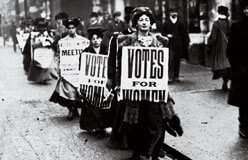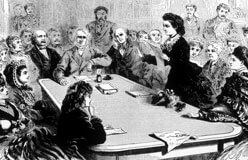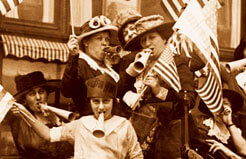Elizabeth Cady Stanton died in 1902, and Susan B. Anthony died in 1906.
But a whole new generation of women had come forward to lead the fight for women’s suffrage. They were armed with new weapons, and they were determined to succeed. In 1920, they were finally able to proclaim, “Victory.”







